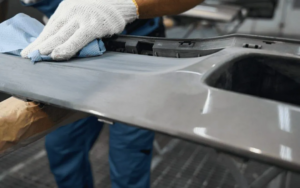
While they add a cosy ambience to any room, the real value of a gas fireplace goes beyond just aesthetics. One of the most critical aspects of any gas fireplace is its heat control. Getting this right can mean the difference between a comfortable, energy-efficient home and one that is either too cold or unbearably hot.
Understanding Heat Control in Gas Fireplaces
Heat control in gas fireplaces is more than just turning a knob or pressing a button. It’s about having precise control over the temperature, flame height, and even the distribution of heat throughout your space. Modern gas fireplaces offer a range of features designed to help homeowners manage heat effectively, including:
- Adjustable Flame Settings: Allow you to increase or decrease the size of the flame, which directly affects heat output.
- Thermostatic Control: Automatically maintains a set temperature in the room, just like a central heating system.
- Remote Controls and Smart Controls: Offer convenience, allowing you to adjust the temperature without leaving your seat.
- Variable Speed Fans: Distribute heat more effectively throughout the room, preventing hot or cold spots.
These features are designed to help you enjoy the comfort of a gas fireplace without wasting energy or compromising on safety.

Why Effective Heat Control Is Crucial
Here are the reasons why heat control is so important for gas fireplace:
1. Enhanced Comfort
A gas fireplace with good heat control lets you maintain your ideal room temperature, ensuring consistent warmth without overheating. In a Melbourne winter, where temperatures can fluctuate dramatically, this control means you can keep your living space comfortable all day long without manually adjusting the settings constantly.
2. Energy Efficiency
Controlling the heat output of your gas fireplace helps you save on energy costs. By reducing the flame height or using a thermostat to maintain a set temperature, you ensure that the fireplace only uses as much gas as necessary. This not only cuts down on your utility bills but also reduces your carbon footprint.
3. Safety
Overheating can be a serious issue with any heating device. Gas fireplaces with advanced heat control systems are safer because they prevent excessive temperatures, which can be a fire hazard. Some models even come with automatic shut-off features if they detect overheating or if the flame goes out unexpectedly.
Types of Heat Control Systems in Gas Fireplaces
Check out the different types of control systems for using your gas fireplace:
1. Manual Controls
These are the most basic type of heat control, where you manually adjust the flame height and heat output using a dial or switch. While they are simple to use, they lack the precision of more advanced systems.
2. Thermostatic Controls
These systems work just like the thermostat for a central heating system. You set your desired room temperature, and the fireplace automatically adjusts the flame to maintain that temperature. This is ideal for those who want a consistent level of warmth without constantly making adjustments.
3. Remote Controls and Smart Systems
Modern gas fireplaces often come with remote controls, allowing you to adjust the temperature, flame height, and even turn the fireplace on or off from across the room. Some models also feature smart controls, which can be operated via a mobile app, letting you control the fireplace even when you’re not at home.
4. Variable Speed Fans
These fans help distribute heat evenly throughout the room, preventing hotspots near the fireplace and cold areas farther away. This is particularly useful in larger spaces or open-plan living areas.

Maximising Heat Control in Your Existing Gas Fireplace
If you already have a gas fireplace but find it difficult to control the heat effectively, here are some tips to improve its performance:
- Regular Maintenance: Keep your fireplace clean and ensure all components, such as the burner and pilot light, are in good working condition.
- Seal Air Leaks: Make sure your home is well-insulated, as heat loss through windows and doors can make it harder to maintain a consistent temperature.
- Use the Right Settings: If your fireplace has a thermostat, use it instead of manually adjusting the flame. This will help maintain a steady temperature.
- Upgrade Your Controls: If your fireplace has only basic controls, consider upgrading to a model with remote control or smart capabilities for easier heat management.
Conclusion
Gas fireplace heat control is not just a luxury – it’s an essential aspect of maintaining comfort, safety, and energy efficiency in your home. By choosing a model with the right heat control features, you can ensure consistent warmth during the colder months without excessive energy costs.
Whether you are shopping for a new gas fireplace or looking to make the most of your existing one, understanding and optimising heat control is the key to a cosy, efficient home.




